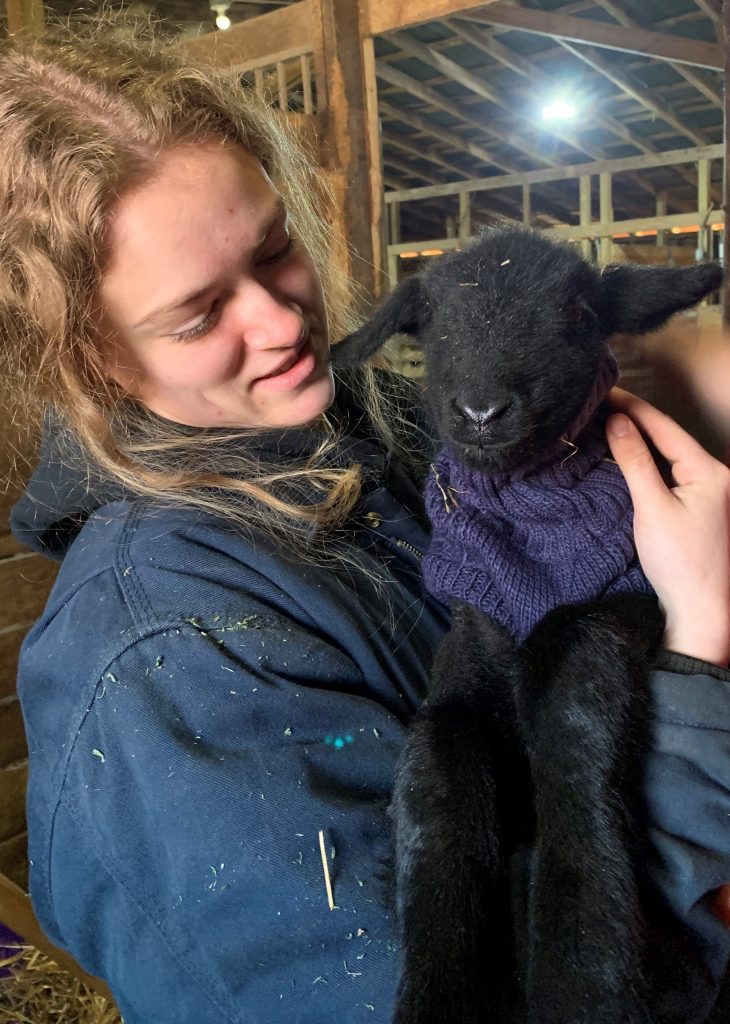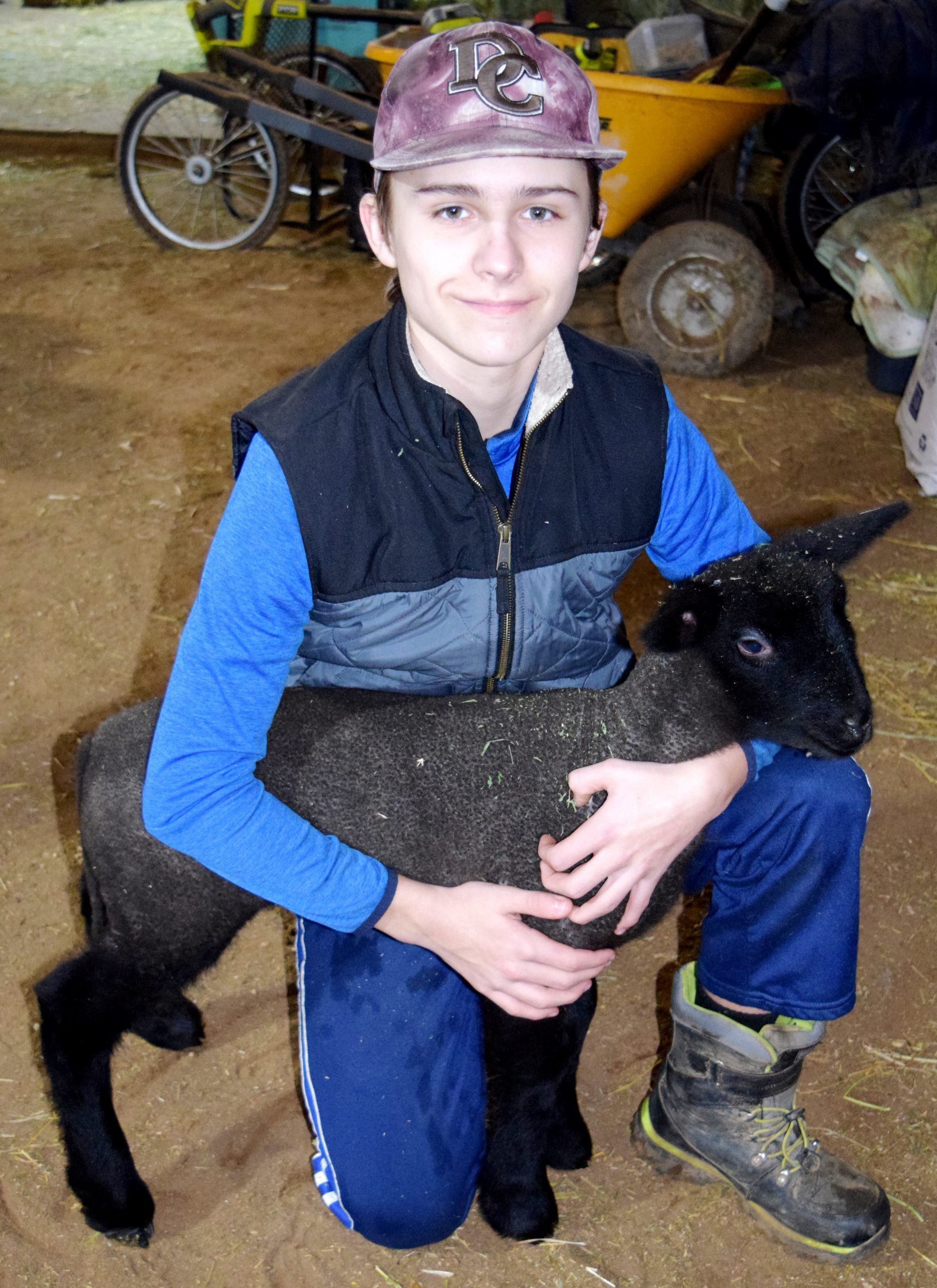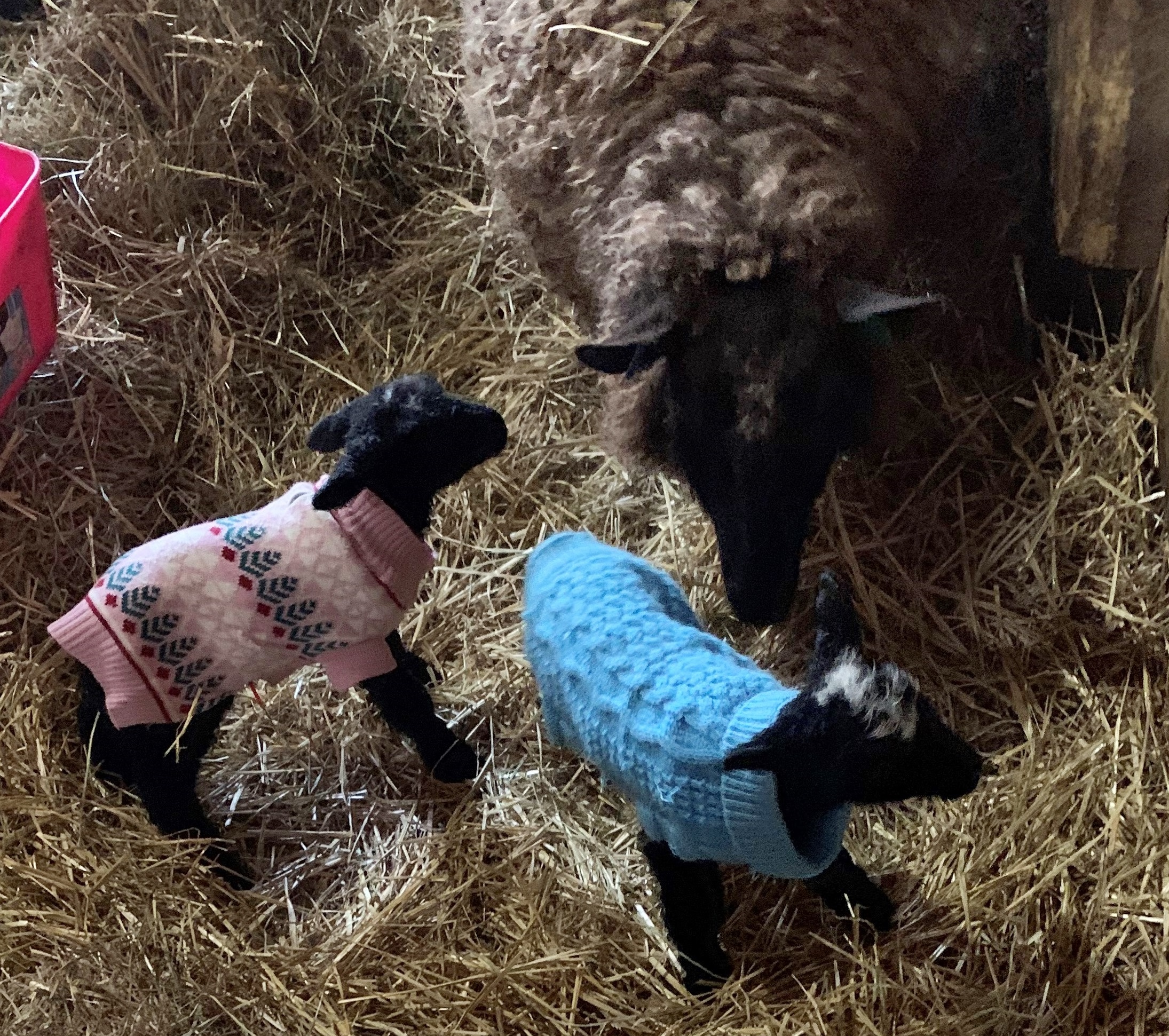Main Content



The arrival of Spring brings thoughts of new life in many forms…the first brave flowers, buds on the trees and the cheerful green of new grass. However, nothing says Spring more than newborn lambs in all their bouncy, soft and adorable glory.
I spoke with two Cape May County 4-H members who are raising lambs this spring to learn what it is like to raise their own lambs instead of buying weanlings. Elizabeth Schalick and Patrick Kelly are members of the Whinny Pigs 4-H Horse & Livestock Club. They have both been in the sheep project for several years, but this is the first year they have raised their own lambs. Let’s hear what they have to say about their experiences so far.
LH: What made you decide to switch from purchasing market lambs each spring to raising your own?
Patrick: “Well, the reason why I decided to raise a lamb instead of buying a weanling is because I wanted to have the full experience. I wanted to know what it is like to raise a sheep from birth to when it would be full grown.”
Elizabeth: “When you raise your own lambs, you get to handle them from start to finish. Also, you can select your lamb’s bloodlines. For example, good conformation and breed standards are important.”
LH: What breed of ewe did you choose and why did you pick that breed?
Patrick: “We picked a Suffolk,” said Patrick K. “The reason is because we want to start a Suffolk sheep business where we breed them. Suffolks gain weight quickly and are pretty easy for a first timer. They are good to show and for meat production.”
Elizabeth: “We chose a Border Leicester ewe because we liked how she looked, and she has a good personality. This is important because the lambs will often have the same personality as their mother. You would not want a skittish lamb for showing.”
LH: How did you go about selecting a ram to breed your ewes to?
Patrick: “We went to a guy named Peter who raises and shows Suffolks in Maryland. He had the perfect ram for us. It had the proven siring record that we needed to get healthy lambs. Also, the ram came from good stock from a known show producer.”
Elizabeth: “We reached out to a breeder from whom we had previously purchased lambs. She gave us some good breeder recommendations.”
LH: What are some of the important things you did to make sure your ewes stayed healthy while they were pregnant?
Patrick: “We maintained our ewes’ diet so they wouldn’t be too fat for when the baby lambs were born, and we gave them a lot of water to make sure they stayed hydrated. Also, we provided a sheep mineral daily. The ewes are vaccinated annually and again right before lambing.”
Elizabeth: “We gave them high quality food and a lot of hay to keep them in good weight. We also kept up to date with vaccines so that the ewes and the lambs would be healthy.”
LH: I bet it was difficult to be patient while you waited for the lambs to be born. How long is a ewe’s gestation period?
Patrick: “This might seem like a long time for a ewe’s gestation period, but the normal gestation is approximately 147 days ranging from 144 to 152 days.”
Elizabeth: “Yes, around 152 days.”
LH: Were you able to see your ewes give birth?
Patrick: “I did see it, but on cameras. Ewes like to birth in private, so there could only be a few people in the barn. If all of us went there, it would be way too many people, and the sheep would stop giving birth.”
Elizabeth: “Yes. Our lambs were born at 6:00 am and 6:15 am on a Saturday morning.”
LH: What steps did you follow to make sure that your lambs were healthy after they were born?
Patrick: “First, we cleaned him off with towels. Next, we allowed mom to lick the lamb dry. Then, we gave the lamb some of the mom’s milk, or colostrum. We helped him nurse by stripping the wax off the mom’s teats so that the baby could nurse. Then we put a coat on the lamb because it was a very cold night. Oh, we also dipped the navel in iodine to prevent infection.”
Elizabeth: “We made sure that they could stand and nurse by themselves. We also made sure that they were warm and dry. They were vaccinated and after five days, their tails were banded.”
LH: What do you feed your ewes to make sure they have enough milk for the lambs to grow well?
Patrick: “We feed them grain, sheep mineral and alfalfa hay. The alfalfa hay is high in calcium and helps the ewe produce milk for lactation.”
Elizabeth: “They get hay constantly and they get fed about two quarts of concentrate a day. They also have clean water all the time.”
LH: What do you do every day to take care of your lambs?
Patrick: “We maintain their water supply and feed them. We also clean their pen and add fresh shavings. We do daily health checks. After that we work with the them for a little bit to make sure they are doing alright and get them used to being handled.”
Elizabeth: “We feed them, check their water and clean their stall.”
LH: What do you plan to do with your lambs?
Patrick: “We plan on making a huge sheep farm with all of them,” according to Patrick K. “Then once we get enough sheep, we are going to sell some and keep the process going. I’m also going to show this one.”
Elizabeth: “I plan on raising and training it and then participating in our local fair.”
Thanks to Patrick and Elizabeth for sharing their lambing experience with us. We plan to check back in before Fair time to see how these two 4-H members are progressing with their lamb projects. For more information on best practices in lambing, check out these previous sheep blog posts:
- Preparing for Lambing, January 15, 2019
- Good Nutrition – the Key to Lambing Success, February 21, 2019
- Understanding Lambing Behavior, March 15, 2018
- Feeding Young Lambs, May 13, 2018
By Linda Horner, Cape May County 4-H Program Coordinator, Rutgers Cooperative Extension